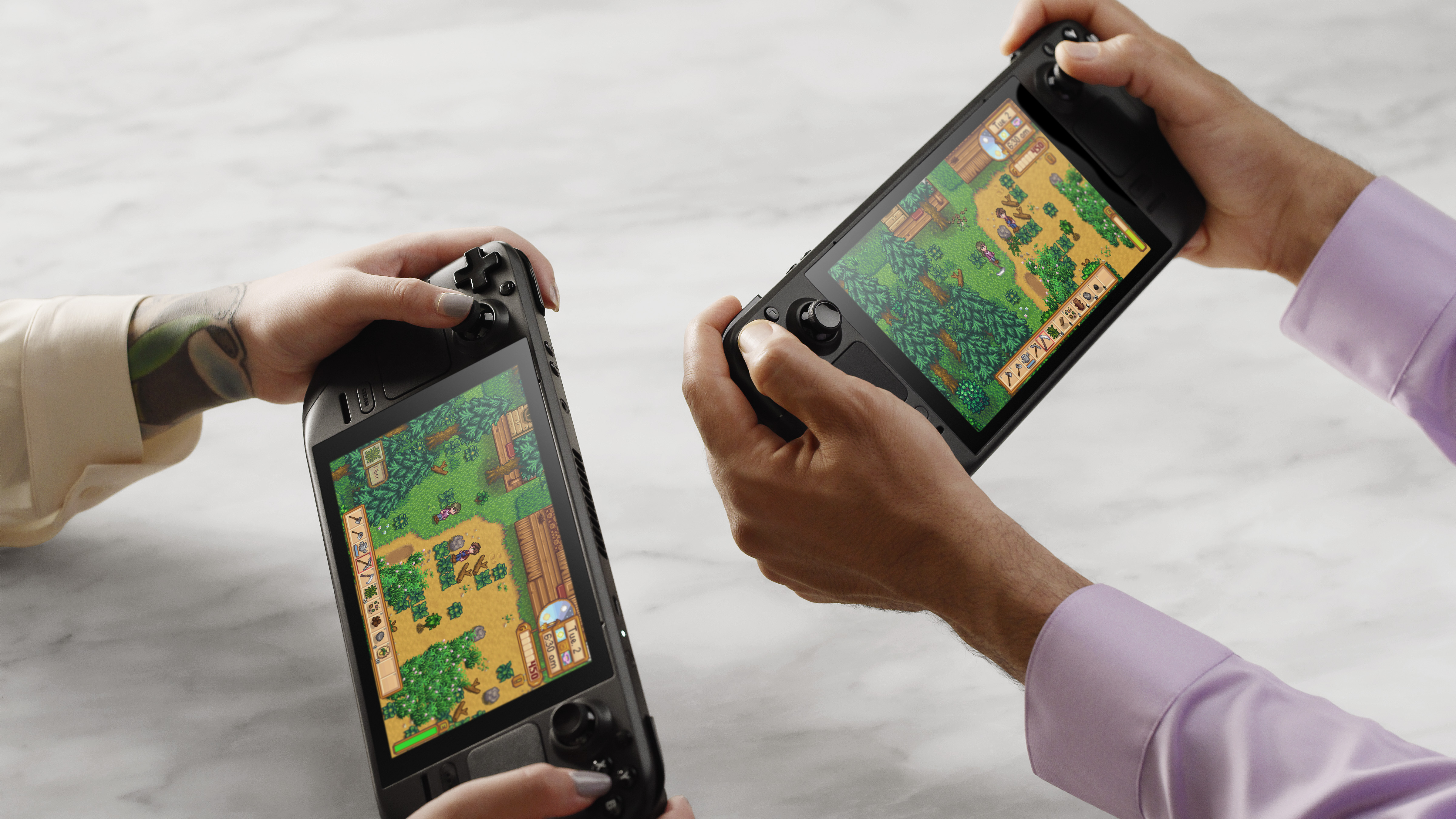Early Steam Deck reviewers say it actually lives up to its potential

Update: The next Valve Steam Deck is ‘years’ from release — that’s a dilemma for me.
Valve won’t be shipping Steam Deck orders until Feb. 25. As such, most gamers won’t be able to get their hands on the system until March, at earliest. Of course, if you’re looking for early Steam Deck units, it helps to have a massively popular YouTube channel, as the LinusTechTips and Gamers Nexus discovered. Both of these influential hardware channels received the Steam Deck early, and based on their evaluations, prospective buyers should feel pretty good about their decision.
PC World summarized what the two reviewers discovered. Generally speaking, the Steam Deck accomplishes what it sets out to do. It’s a portable, handheld PC that can run most games at reasonable settings, without charging too much for the privilege. (The console starts at $399, and even the fanciest version is only $649. That’s not much, compared to a full gaming desktop, especially since the Steam Deck has a monitor built-in.)
In terms of performance, one of the most impressive games tested was Devil May Cry 5. This 2019 game ran at a steady 60 frames per second at 1080p, arguably outperforming its PS4 and Xbox One counterparts. Ghostrunner ran between 40 and 90 fps; Forza Horizon 5 clocked a steady 60 fps. Dead Cells, a relatively undemanding 2D roguelike, could run at well north of 100 fps.
The only real outlier was Remedy’s action/adventure game Control, which sometimes chugged along at around 30 fps. However, while 30 fps isn’t a particularly impressive frame rate from modern gaming hardware, it’s perfectly playable, especially considering that you can now play the game almost anywhere.
In terms of battery life, the hardware reviewers had conflicting opinions. Valve claims that the Steam Deck can play between two and eight hours of games on a single charge. More demanding games use up more power, which explains the wide range. Even so, Gamers Nexus found that the actual battery life was somewhere between 90 minutes and six hours, depending on the game. Linus Tech Tips’ measurements, on the other hand, were in line with Valve’s: three hours at minimum, eight hours at maximum.
To be truthful, it may not be possible to get a completely standardized battery life for the Steam Deck, since PC games have such a tremendous range of system requirements and graphical options. At the very least, it seems like the Steam Deck can handle simple games for hours on end; more demanding fare may drain the battery in less time than it would take to travel on a short flight.
Get instant access to breaking news, the hottest reviews, great deals and helpful tips.
The physical design seems to feel good, at least. Both reviewers said the button layout was comfortable, and the device was comfortable to hold, for all its size and heft. Vibration seems to be a bit of an issue, however, as the Steam Deck lacks the intense feedback that players have grown used to ever since the N64 era. While the Steam Deck has some slight haptic feedback in the touchpads, it doesn’t seem to measure up to something like the Sony DualSense, for example.
If you have some time on your hands, you can watch both videos for yourself; it’s a little less than an hour of deep-dive analysis with Valve’s newest machine. Otherwise, other outlets (including Tom’s Guide) should get their hands on the device within the coming weeks. Then, we’ll see whether the age of handheld PC gaming is really ready to begin.
Update: The Steam Deck can now run Windows — but there's a big catch, so you may want to hold fire if you're lucky enough to have the handheld PC.

Marshall Honorof was a senior editor for Tom's Guide, overseeing the site's coverage of gaming hardware and software. He comes from a science writing background, having studied paleomammalogy, biological anthropology, and the history of science and technology. After hours, you can find him practicing taekwondo or doing deep dives on classic sci-fi.


